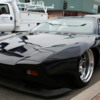Naw brother....It's always going to be my daily driver. To me, trailer and garage queens are worthless, but that just my personal feelings, to each his own.... If I wanted something to just look at, I'd buy a poster and put it on my wall. It would be a lot easier and a hell of a lot cheaper.
I did this to actually help in the cleaning and not so much the show of it. But it did come out good. Now I can spray everything down with an Orange cleaner, let it set for 10 minutes and then just wash everything away with water. Towel dry it and it's back to looking like it was just done.
I stripped the 1/2 shafts and clear coated them. They look ok....Thought about powder coating them too but them but decided not to.
Tooth brush ???? Not a chance

It has always been and will always be a driver to me. The day I stop driving it is the day I sold it.
Thanks Deeb.


